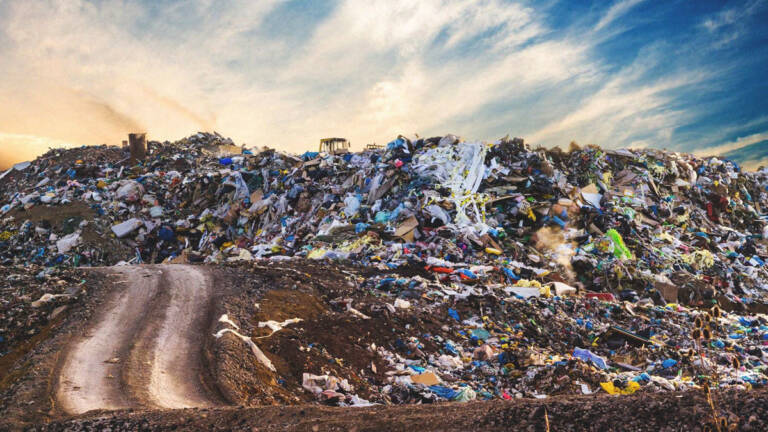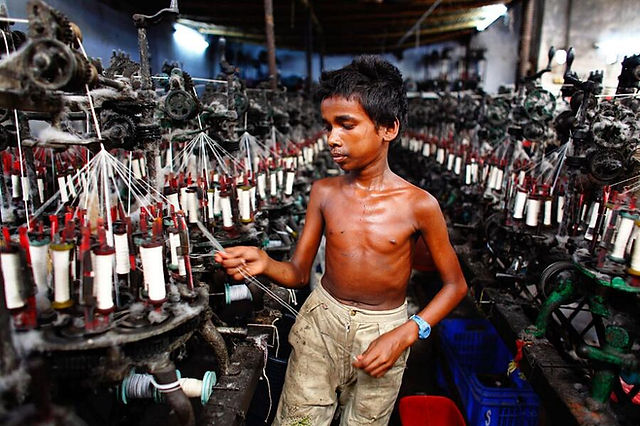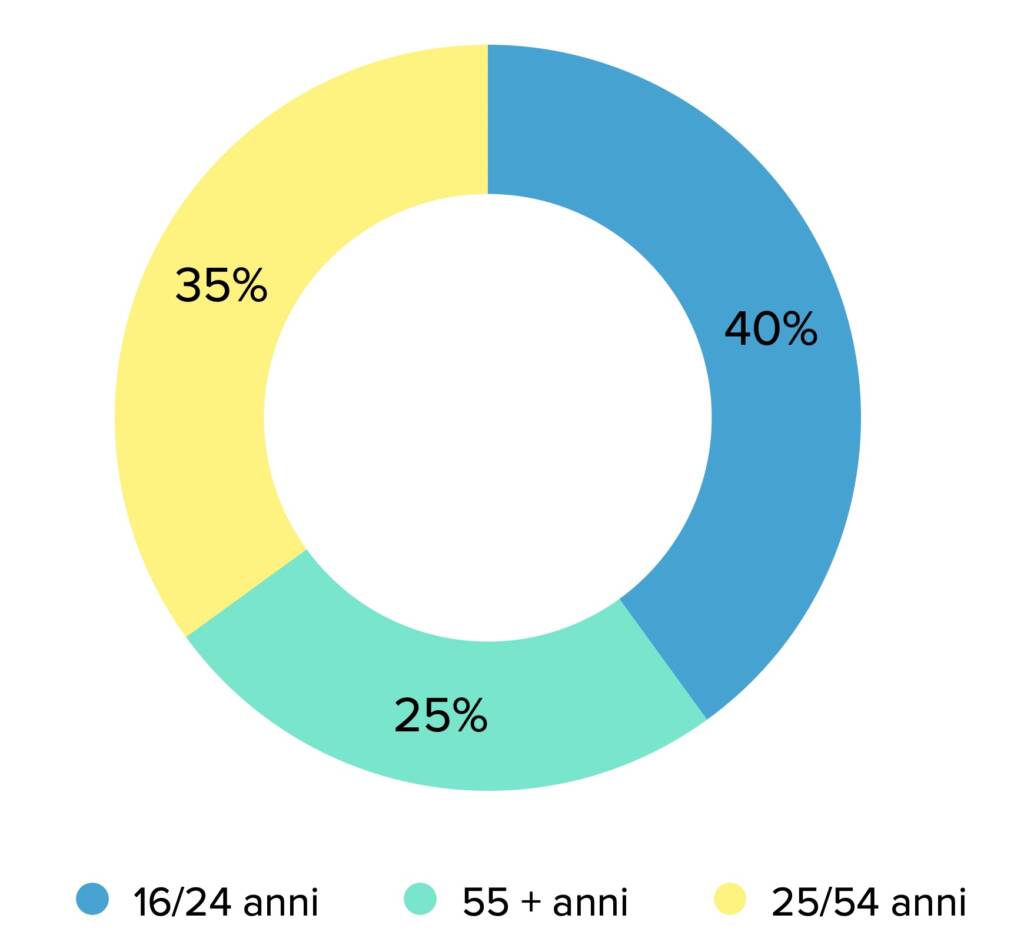Fast fashion a trend that we can no longer afford, data in hand.

A very recent article on the subject of fast fashion, which appeared on the blog of Spirit of St. Louis, a small Italian manufacturing company, has the advantage of giving us a long series of interesting data on the subject. The article, entitled: Fast fashion, global impact. Here's what the research tells us.
Worrying about the harmful effects of large-scale fashion are the small brands that still work at an artisanal level, just like Spirit of St. Louis which produces small quantities, focusing on quality and collaborating only with Italian artisan tailors and moreover within a very limited radius (in the province of Vicenza).
If the subject were addressed at a political level, we would be able to give importance and prominence to companies that produce high quality products locally. But apparently not even the assists most favorable to Made in Italy are pushed online by national managers.
Without this contribution, small and medium-sized enterprises have a difficult time competing with the big brands, so much so that they are part of a galaxy known to only a few enthusiasts.
With this article we want to give not only the umpteenth sweetheart to Made in Italy, but also to encourage our readers to consume Italian manufactured products.
Fast fashion opportunity or problem?
The phenomenon of fast fashion is characterized by "clothing dumping" which has brought thousands of tons of used clothes to African countries such as Ghana. While used clothing offers affordable access, it harms local industry and has a devastating environmental impact. Western donations, import infrastructure and African demand contribute to the flow of used clothes.
Low-cost fashion has a significant impact on the environment and economy of poor countries. Nigeria, Kenya, Uganda, Tanzania and Benin are involved in the used clothing trade. The fashion industry contributes 2-10% of global greenhouse gas emissions, with approximately 1.2 billion tonnes of CO2eq per year. Nanoplastics, present in synthetic fabrics or released during washing, damage aquatic ecosystems and marine fauna. They can cause digestive damage and accumulation of toxins in marine organisms, posing a risk to the food chain and human health.
Who are the main producers?
Fast fashion is dominated by several internationally known brands. According to the article that appeared on the blog of the small artisan reality, the main fast fashion producers include Zara (Inditex group), H&M, Forever 21, Primark and Topshop. Furthermore, there are also some Italian brands such as Benetton, OVS and Terranova that fall under the fast fashion category. These brands offer trendy and accessible clothing, and have an international presence.
Countries with the highest consumption of fast fashion include the United States, United Kingdom, China, India and Brazil. The United States is distinguished by a high consumption of clothing and a wide range of low-cost brands. The UK is a center of consumer trends and has a vibrant fashion industry. In China, the increase in clothing consumption is due to the large population and growing middle class. India, with its large population growing into the middle class, is experiencing a significant increase in clothing consumption. Brazil represents a significant consumer market in South America, with a strong interest in fashion and fast fashion brands.

the scourge of child labor for the production of low-cost clothing
In Europe, the UK is considered a major fast fashion market, with London as the fashion capital. Germany is a major consumer market in Europe, with cities such as Berlin and Munich notable for their fashion scene and the presence of numerous fast fashion brands. France is famous for its influence in the fashion industry and Paris is one of the fashion capitals of the world. Despite the image of French high fashion, French consumers still participate in the consumption of cheap and fashionable clothing. Spain is known for its strong presence of throwaway consumer brands such as Zara, and cities such as Barcelona and Madrid are important centers of consumer trends. Italy, with its tradition in the fashion sector, also has a significant consumption of fast fashion, especially among young consumers.

Some of the most popular low cost fashion brands.
Who are the biggest consumers?
Perhaps it will come as no surprise that the data that assigns the palm of the largest consumers of disposable clothing. In fact, according to research cited in the Spirit of St. Louis article, the market for very young people is the largest segment of consumers of this type of product.
This appears in stark contrast to the narrative on environmental sensitivity of the Fridays for future generation.
According to a 2020 GlobalWebIndex survey, younger consumers are generally more likely to purchase fast fashion clothing than older consumers, with 40% of consumers aged 16-24 having purchased fast fashion clothing in last year. These data indicate that younger age groups are the main consumption target for fast fashion, including millennials, Generation Z, teenagers and young adults in their 20s and 30s.

Data on fast fashion consumers divided by age group
So the problem is the diesel car?
In the light of the cited article, the hypocrisy of the now rampant environmental narrative stands out even more. This, if you notice, never touches the comings and goings of the container ships that cross globally.
Here's what it's all about according to the piece that appeared on the Spirit of St. Louis blog:
“According to some estimates, several hundred thousand tons of used clothing arrive in Africa every year. Some reports put figures ranging from 200,000 to 500,000 tons or even beyond, but it's important to note that these figures are approximate and can vary.
A study conducted by the Ellen MacArthur Foundation estimated that the fashion industry contributes 2-10% of global greenhouse gas emissions. Greenhouse gas emissions are mainly caused by the production and transport of textile and clothing materials. The Global Fashion Agenda and the Boston Consulting Group reported that greenhouse gas emissions from the fashion industry amount to approximately 1.2 billion tonnes of CO2eq per year, corresponding to 4% of total global emissions.”
How to counter the harmful effects of fast fashion?
The Spirit of St. Louis article lists a whole series of countermeasures that companies can implement to counter the drift to which we are destined.
Instead of dwelling on trivial platitudes, Spirit of St. Louis indicates intelligent marketing and production strategies, but above all it indicates the solver role of consumers .
In fact, it is up to us to prove our intelligence by choosing alternative products that also exist on the market, even if they are not found on the shelves of the rampant large-scale retail trade.
As the L'inkiesta piece entitled, Between luxury and fast fashion: the middle ground populated by invisible brands ( read ), accuses us, we shouldn't expect them to be put in the foreground by the media and social networks. In fact, there is an advertising market that sees small producers unable to compete with the billion-dollar budgets of multinationals.
It is therefore necessary to constantly search for small local or artisanal brands that are easily found online or at industry events.
Which? Well, to begin with, the shops that are often hidden (for reasons of rental budget), the flea markets and second-hand shops, the vintage events that often show small companies that create new garments, perhaps useless retro (remade) , really as does Spirit of St. Louis.
And then they are practically all found online; so it's just a matter of learning how to find the right search keywords.
Research is part of the job of knowing how to choose.

Want to discover Spirit of St. Louis?
To find out what Spirit of St. Louis is and what it does GO TO ITS HOME PAGE.
To learn more about the issues touched by Spirit of St. Louis VISIT HIS BLOG.
SOURCES
Original article in Spirit of St. Louis.
Sources cited by the article:
Fast fashion, environmental impact
Fast fashion waste chokes Ghana
Fast fashion is out of fashion: EU recommendations
Oxfam: injustice and exploitation, the price of fashion

Thanks to our Telegram channel you can stay updated on the publication of new articles from Economic Scenarios.
The article Fast fashion a trend that we can no longer afford, data in hand. comes from Economic Scenarios .
This is a machine translation of a post published on Scenari Economici at the URL https://scenarieconomici.it/fast-fashion-una-moda-che-non-possiamo-piu-permetterci-dati-alla-mano/ on Thu, 18 May 2023 08:11:54 +0000.
